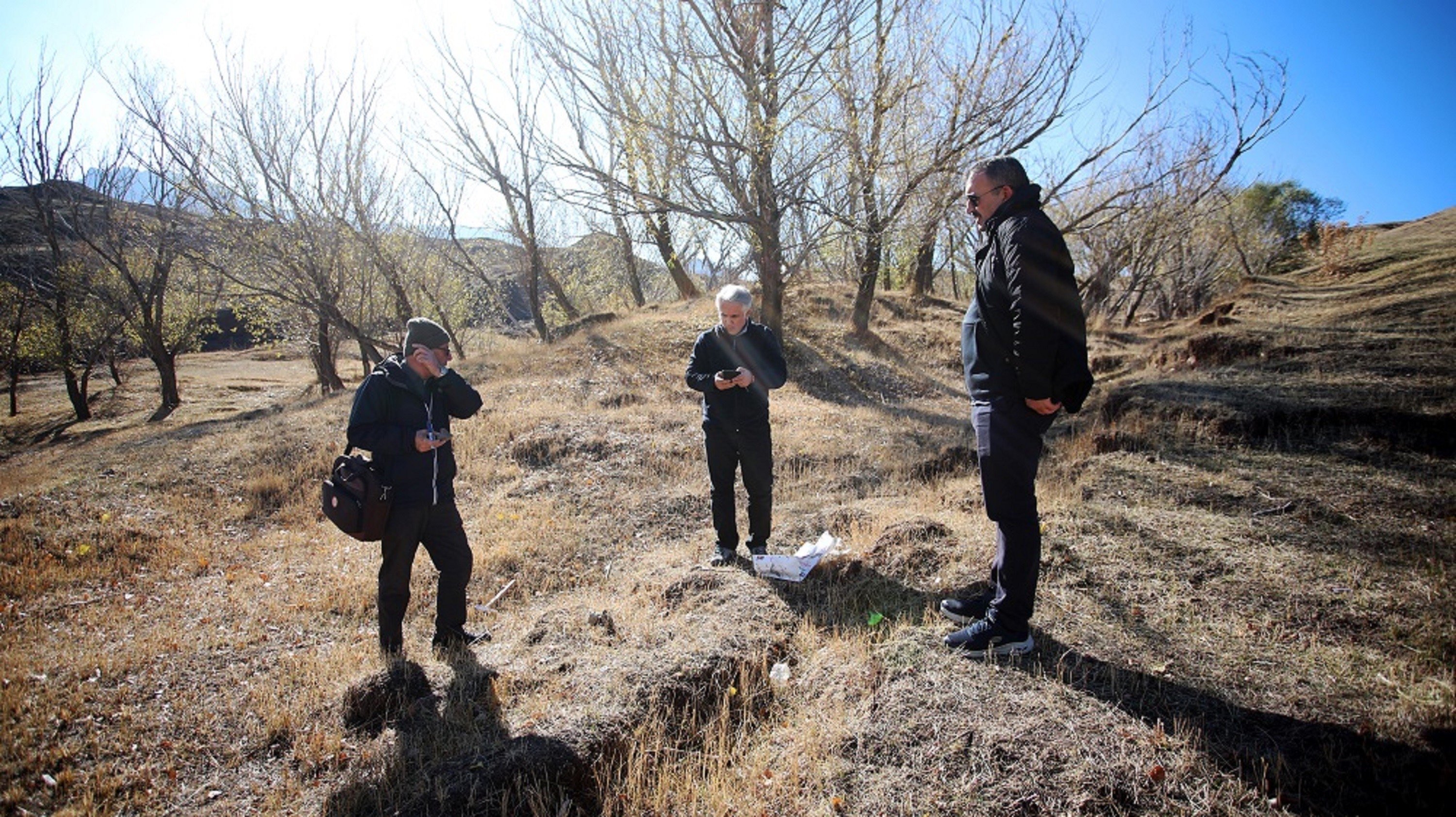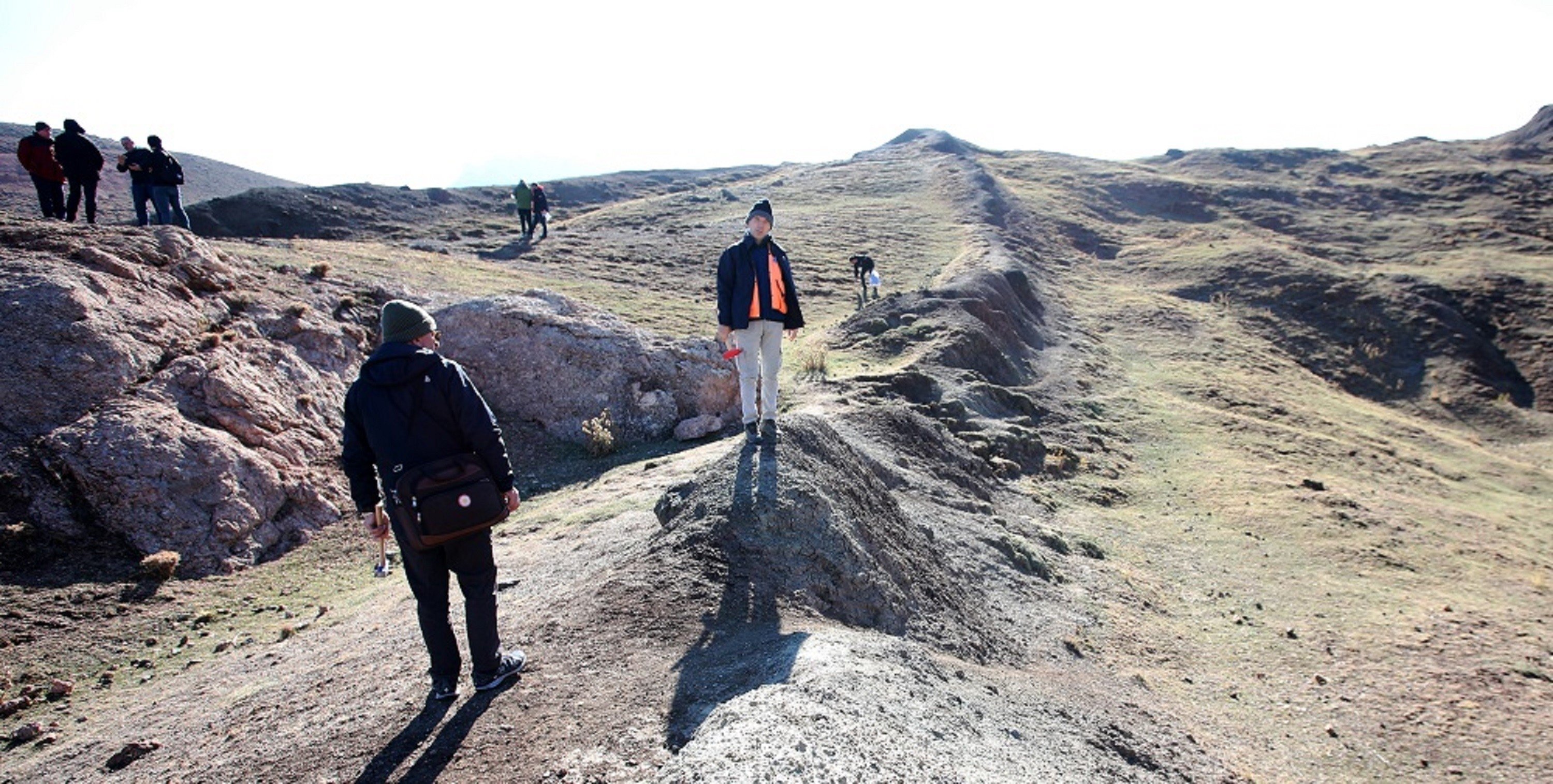© Turkuvaz Haberleşme ve Yayıncılık 2026
The excavation work has started in the area where the remains of Noah's Ark – the legendary vessel whose story is told in the Torah, the Bible and the Quran – are believed to be located.
The research team established by Ağrı Ibrahim Çeçen University (AIÇU) and Istanbul Technical University (ITU) started working jointly in Türkiye's district of Ağrı. The samples include soil and rock fragments and were found in the area by researchers, which include academicians who are experts in geophysics, chemistry and geo-archaeology. The samples were then sent to ITU laboratories for examination.
The remnants were first discovered by map engineer Capt. Ilhan Durupınar in 1959 during a reconnaissance flight to map the eastern Anatolia region. The ruins now attract the attention of many local and foreign tourists.
In the Quran, it is mentioned that Allah informed Noah about an impending flood that would engulf the entire Earth to save him and all those who are with him in his ark. Noah then proceeded to build his vessel in which he kept members of his family along with pairs of all animals and birds.

The area is in danger as it is threatened by landslides and giant crevasses have already formed nearby. For that reason, the "Ağrı Mountain and Noah's Ark Research Team" was formed with the cooperation between AIÇU and ITU for scientific research to be conducted on the ruins.
AIÇU Vice Rector Faruk Kaya noted that they initiated research on Noah's Ark and said: "Mount Ararat is a well-known mountain in the world thanks to its geological and geomorphological features, as well as according to a belief that it is home to Noah's Ark. Our university have been working on this area since 2003. This year, we wanted to work with ITU to carry out more detailed studies."
"ITU is one of the most equipped universities in this regard. We formed a working group of academics from the university and they examined the natural structure between the villages of Telçeker and Üzengili, that is, the formation resembling the silhouette of Noah's Ark. As the samples are being processed, we will determine our road map based on the results. We have expert instructors who are specially equipped and competent in geophysics, chemistry and archaeological research," he added.

Also stating that Noah's Ark aroused global interest, Kaya noted: "Noah's Ark is mentioned in the holy books of divine religions. As the majority of the sources draw attention to Mount Ararat and its surroundings, the area has a really big potential for faith tourism. In particular, there is a growing interest from European countries and the Americas. Europeans have already initiated the first studies in this field as Johann Jacob Friedrich Wilhelm Parrot climbed Mount Ararat to search for the remains of Noah's Ark in 1829."
"In 2008, a group of researchers from Hong Kong went to Mount Ararat. They found a cave here inside with some wood that they claimed to belong to Noah's Ark, sharing it with the press. Of course, whether the wood they found belonged to Noah's Ark is a controversial issue, but we think they were successful in terms of results. Back in Hong Kong, they built the Noah's Ark Museum, which had over 7 million visitors. In economic terms, they put faith tourism into action there. Ağrı, which is one of the underdeveloped regions of our country, has serious potential in that sense. Our aim, as a university, is that if we can reveal this and turn this place into a faith tourism center, we think that the economy of Ağrı and our country will be seriously revived," he added.
